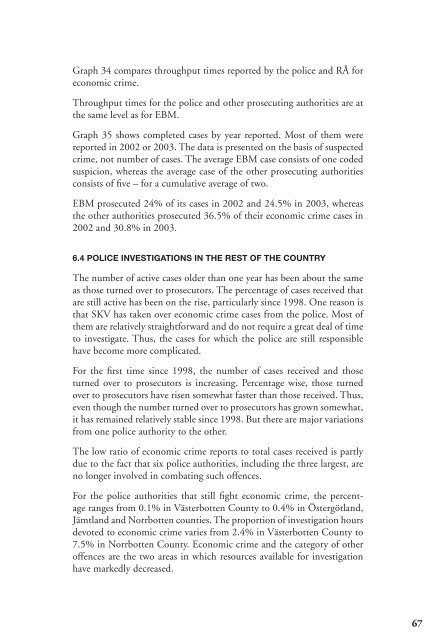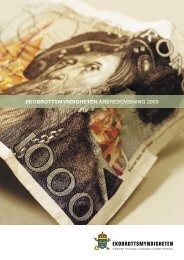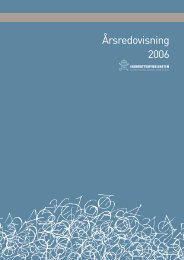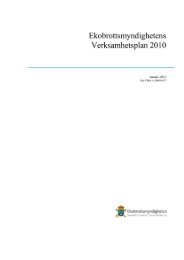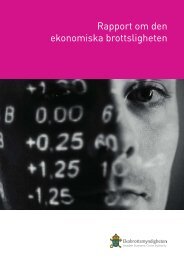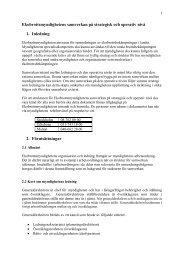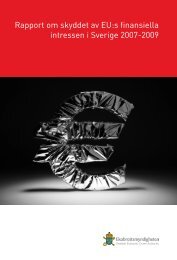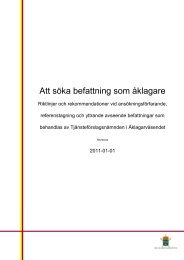Economic crime report 2004 - Ekobrottsmyndigheten
Economic crime report 2004 - Ekobrottsmyndigheten
Economic crime report 2004 - Ekobrottsmyndigheten
You also want an ePaper? Increase the reach of your titles
YUMPU automatically turns print PDFs into web optimized ePapers that Google loves.
Graph 34 compares throughput times <strong>report</strong>ed by the police and RÅ for<br />
economic <strong>crime</strong>.<br />
Throughput times for the police and other prosecuting authorities are at<br />
the same level as for EBM.<br />
Graph 35 shows completed cases by year <strong>report</strong>ed. Most of them were<br />
<strong>report</strong>ed in 2002 or 2003. The data is presented on the basis of suspected<br />
<strong>crime</strong>, not number of cases. The average EBM case consists of one coded<br />
suspicion, whereas the average case of the other prosecuting authorities<br />
consists of five – for a cumulative average of two.<br />
EBM prosecuted 24% of its cases in 2002 and 24.5% in 2003, whereas<br />
the other authorities prosecuted 36.5% of their economic <strong>crime</strong> cases in<br />
2002 and 30.8% in 2003.<br />
6.4 POLICE INVESTIGATIONS IN THE REST OF THE COUNTRY<br />
The number of active cases older than one year has been about the same<br />
as those turned over to prosecutors. The percentage of cases received that<br />
are still active has been on the rise, particularly since 1998. One reason is<br />
that SKV has taken over economic <strong>crime</strong> cases from the police. Most of<br />
them are relatively straightforward and do not require a great deal of time<br />
to investigate. Thus, the cases for which the police are still responsible<br />
have become more complicated.<br />
For the first time since 1998, the number of cases received and those<br />
turned over to prosecutors is increasing. Percentage wise, those turned<br />
over to prosecutors have risen somewhat faster than those received. Thus,<br />
even though the number turned over to prosecutors has grown somewhat,<br />
it has remained relatively stable since 1998. But there are major variations<br />
from one police authority to the other.<br />
The low ratio of economic <strong>crime</strong> <strong>report</strong>s to total cases received is partly<br />
due to the fact that six police authorities, including the three largest, are<br />
no longer involved in combating such offences.<br />
For the police authorities that still fight economic <strong>crime</strong>, the percentage<br />
ranges from 0.1% in Västerbotten County to 0.4% in Östergötland,<br />
Jämtland and Norrbotten counties. The proportion of investigation hours<br />
devoted to economic <strong>crime</strong> varies from 2.4% in Västerbotten County to<br />
7.5% in Norrbotten County. <strong>Economic</strong> <strong>crime</strong> and the category of other<br />
offences are the two areas in which resources available for investigation<br />
have markedly decreased.<br />
67


